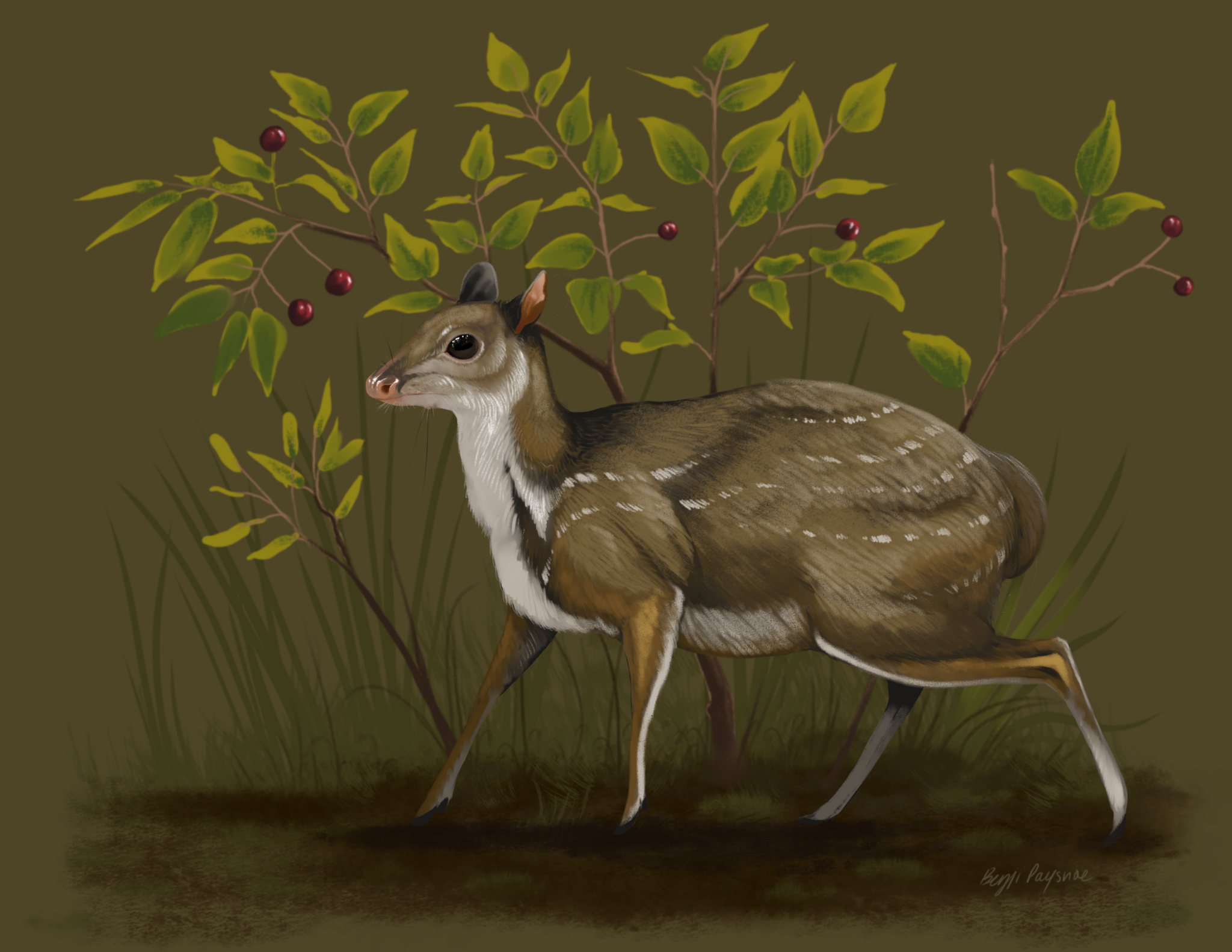
South Dakota Searchlight
INTERIOR — A team of researchers studying fossil remains found by an intern in South Dakota’s Badlands National Park have discovered a previously unknown type of tiny, hornless deer that lived in the area 32 million years ago, the National Park Service announced Thursday.
Researchers from the park, the American Museum of Natural History, and California State Polytechnic University say the remains are a new genus. Mattison Shreero and Ed Welsh of Badlands National Park headed the research, which was published this week in the Proceedings of the South Dakota Academy of Science.
The new deer, Santuccimeryx (“Santucci’s ruminant”), was named after Vincent L. Santucci to honor his contributions to the paleontology program at Badlands National Park. He is the senior paleontologist and paleontology program coordinator in the Geologic Resources Division of the National Park Service.
Santuccimeryx belongs to the extinct family Leptomerycidae, whose members were about the size of house cats and lived in North America from about 41 million years ago to about 11 million years ago. They are considered close relatives to the living chevrotains, or mouse deer, from the tropical forests of central and western Africa and southeast Asia.
Geoscientists-in-the-Parks intern Tiffany Leone discovered and submitted a visitor site report in 2016 about what turned out to be the first and only known skull of Santuccimeryx.
Shreero said in a news release that the find highlights the importance of citizen science.
“This is the only skull of this animal ever found,” she said. “And if somebody had walked away with it, or if they just hadn’t reported it and it had eroded away, we would have never known about it.”
